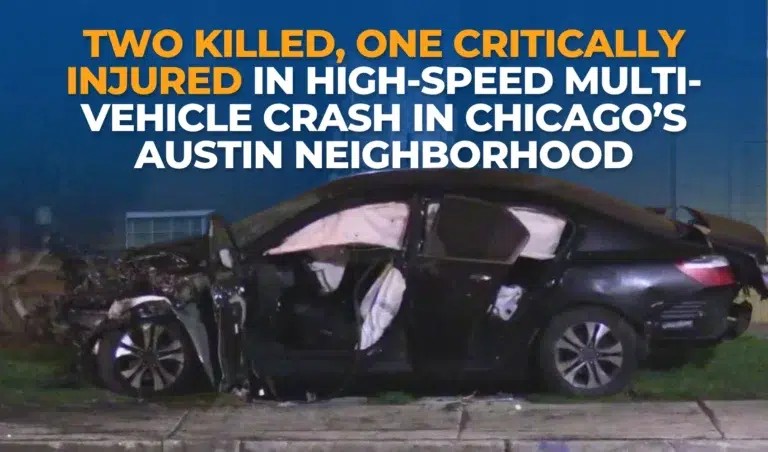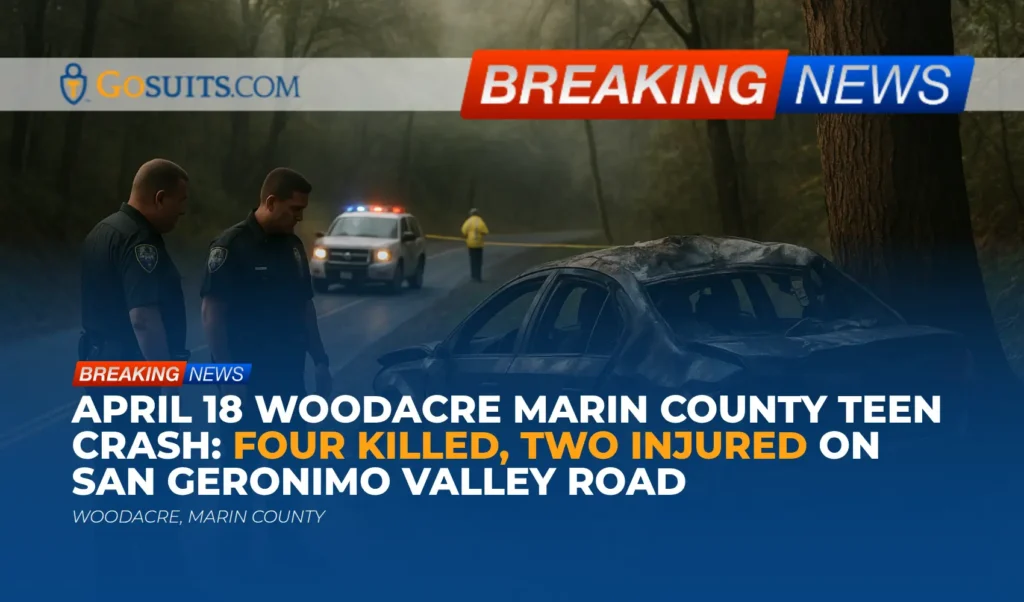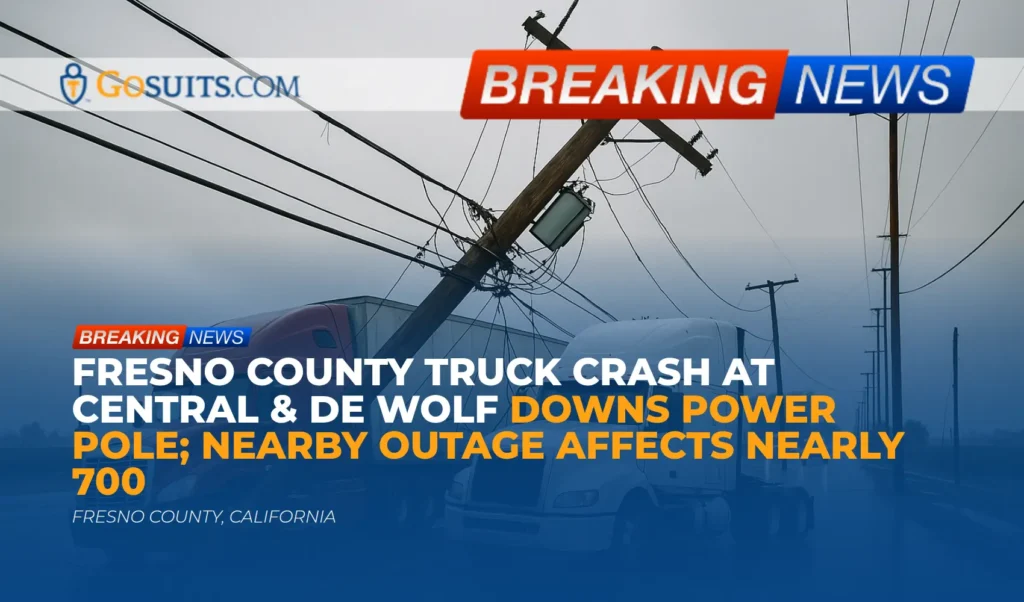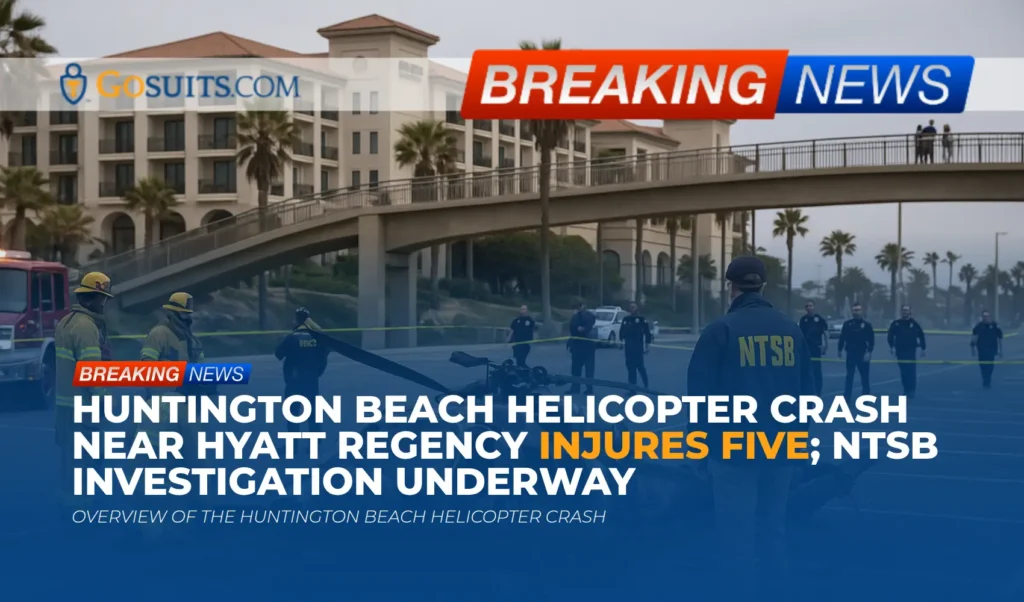A violent early morning crash involving multiple vehicles left two people dead and another critically injured in Chicago’s Austin neighborhood on Sunday, according to police. The collision occurred shortly after 2 a.m. on April 20, 2025, near the intersection of Central Avenue and Augusta Boulevard.
Chicago officers had reportedly observed one of the involved sedans traveling at a high rate of speed prior to the crash. Preliminary findings indicate that a separate sedan, traveling eastbound on Augusta Boulevard, ran a red light and struck the other sedan. One of the vehicles then collided with a minivan before both sedans came to rest in the front yards of nearby homes.
The 36-year-old driver who allegedly failed to stop at the red light was transported to a local hospital, where he was later pronounced dead. A female passenger in his vehicle was critically injured and remains hospitalized with multiple injuries.
The 22-year-old driver of the second sedan was also transported to a hospital, where he was pronounced dead.
The driver of the minivan declined medical treatment at the scene, police said.
The intersection was closed for several hours overnight as crash reconstruction teams investigated the site and cleared the wreckage. The names of those involved have not yet been released. Authorities have not indicated whether impairment or additional contributing factors are suspected. The incident remains under investigation.
What Families Should Know About Police Reports and Crash Investigations
In serious crashes involving fatalities or critical injuries, the official police report is often the foundation for understanding what happened. These documents typically include diagrams of the crash, physical measurements, weather and lighting conditions, and preliminary assessments made by responding officers or crash reconstruction teams. In collisions with multiple vehicles and high-speed impacts, as in the recent Austin neighborhood crash, these reports become critical in clarifying who had the right of way, how fast each vehicle was traveling, and where each collision occurred.
In Chicago, police reports can be obtained in three ways: in person, by mail, or online.
- In Person:
Visit the Records Customer Service Section at Chicago Police Headquarters, located at:
3510 S. Michigan Ave., 1st Floor, Room 1043
Service hours are Monday to Friday, 8:30 a.m. to 3:30 p.m., excluding holidays.
This is the fastest way to obtain a physical copy of the report. - By Mail:
Send your request to:
Chicago Police Department
Attn: Records Inquiry and Customer Service Section, Unit 163
3510 S. Michigan Ave. Chicago, IL 60653
Include a self-addressed, stamped envelope and payment via check or money order made payable to the “Department of Revenue, City of Chicago.” - Online:
Visit the CPD’s traffic crash report portal here: https://home.chicagopolice.org/services/traffic-crash-reports/
You will need to provide accident details such as date, time, location, and insurance information. The fee for a traffic crash report is $6.

In addition to the basic report, other documentation, such as event data recorder downloads, autopsy or toxicology findings, and traffic signal data, may become available through agencies like the Cook County Medical Examiner’s Office orthe Chicago Department of Transportation. These records often provide vital insights in fatal crash investigations, specifically when liability is contested.
Commentary from a Gosuits Personal Injury Attorney
This tragic crash in the Austin neighborhood raises several legal and investigative considerations that are common in high-speed, multi-vehicle collisions. When a driver runs a red light and a crash results in fatalities, that traffic violation will likely serve as the central issue in any liability assessment. However, multiple layers of responsibility may still exist, particularly if speed, road design, or vehicle defects played a role.
In this case, one of the sedans was reportedly seen speeding before the crash, and both vehicles ended up severely damaged and off-road, indicating a high-force impact. Whether both drivers contributed to the severity of the outcome is a question that will depend on the data—vehicle event recorders, camera footage, and physical evidence from the scene.
In addition to determining fault, it’s essential to evaluate available insurance coverage. If either driver held auto insurance policies, they may include liability coverage for injuries to others and personal injury protection (PIP) or medical payments coverage for passengers. The critically injured passenger may have a claim through the at-fault driver’s liability policy, or potentially under uninsured or underinsured motorist provisions if coverage limits are low.
One additional consideration involves the driver of the minivan. Although they declined medical attention at the scene, delayed onset of symptoms is common in trauma cases. That driver’s right to pursue a claim would not be diminished by refusing treatment at the time of the incident, and medical evaluation in the days following a crash often becomes an important part of documenting harm.

Crashes like this demand a full investigation—not only to assign legal responsibility but to give those affected a clearer understanding of how such a devastating loss occurred. When multiple vehicles are involved and lives are lost, preserving physical evidence, reviewing traffic patterns, accessing data promptly, and consulting with a personal injury lawyer are essential steps in making sure the full truth comes to light.






